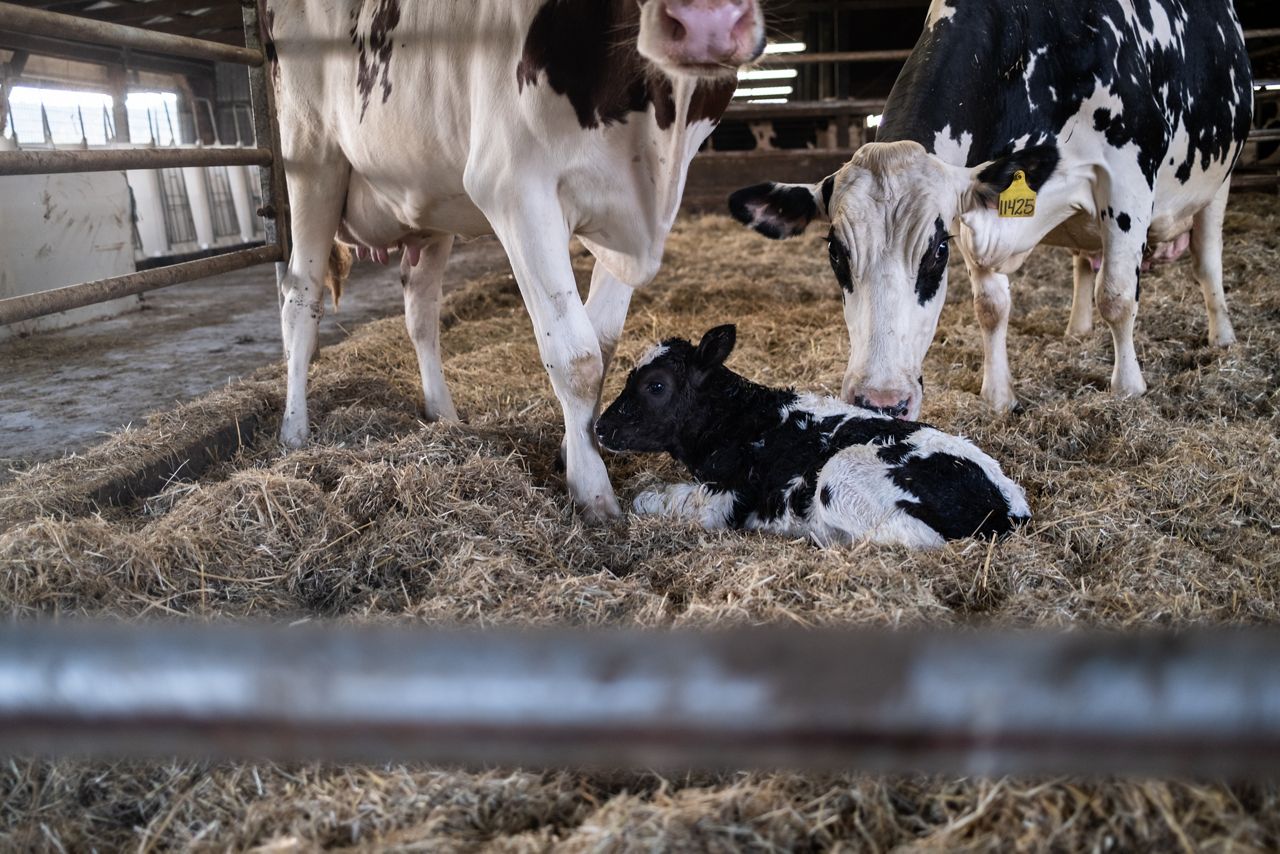Seven farms in Onondaga County will be open to the public this weekend as part of the county’s annual ON Farm Fest.
The farm is open Saturdays from 10am to 3pm and you can see everything from dairy cows to vegetables to longhorn cows. Techniques used by farmers may also be seen.
A calf born on Burbrand Farm. (Emily Kenney/Spectrum News 1)
Barbland and White Eagle Dairy near Fabius offers farm tours, hoof trimming demonstrations and more. Dairies use many forms of technology on the farm, including apps that track all information about their cows.
“Each cow has an identification number and has an ear tag so you can launch an app on your phone that tells you all kinds of information you need to know about that cow,” says Johanna Bossard co. Told. -Owner of Barbland and White Eagle Dairy. “I know when she was born. I know how many offspring she produced. I know the sex of her offspring. Someday I know how much milk she produces If she’s ever been sick I’ve had to treat her , and I know what I’ve treated her with. These are all important things you know at the push of a button from an app on your phone, and very good technology.”
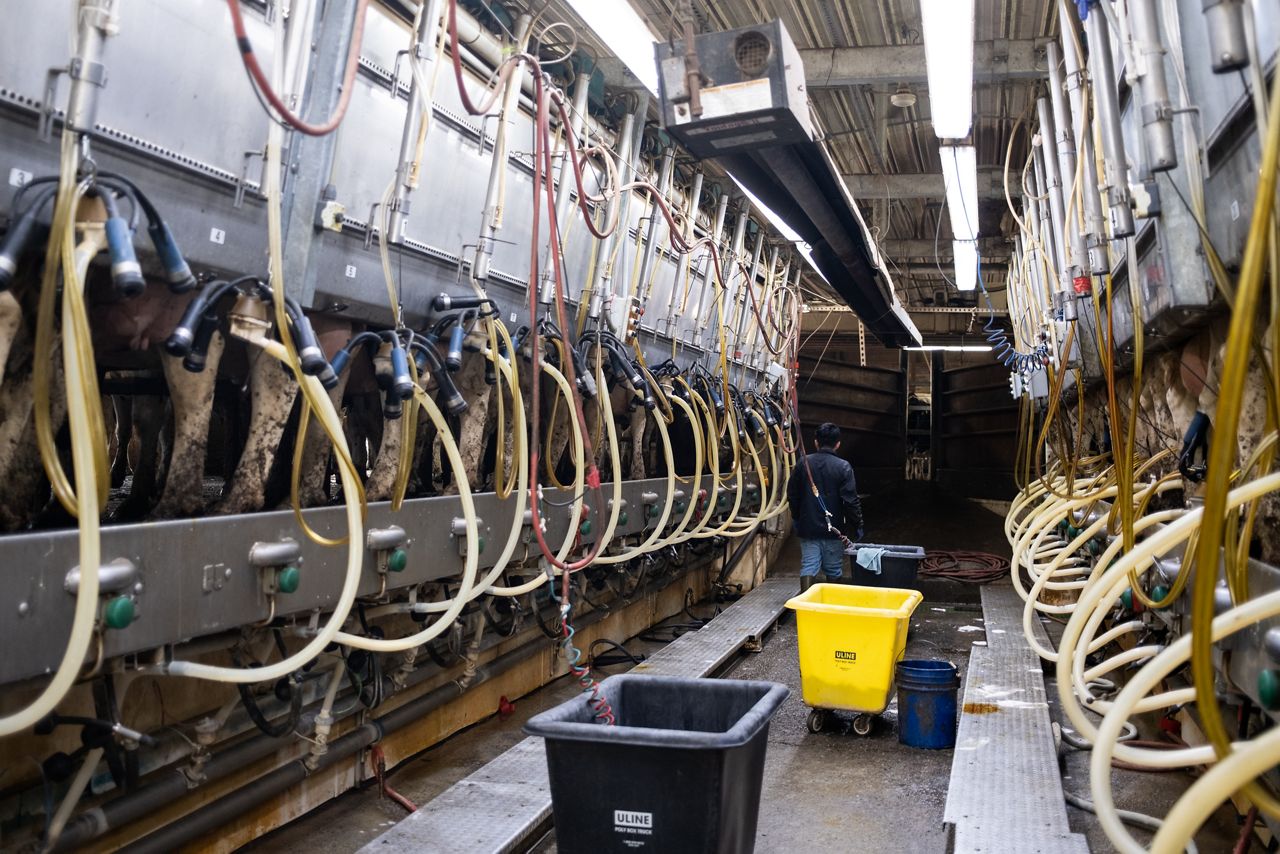
A milk parlor that milks 16 cows three times a day. (Emily Kenney/Spectrum News 1)
Barbland and White Eagle Dairy is owned by four families: Bossards, Huysmans, Cartharts and Engsts. Both operate as Bar Brand and White Eagle Dairy within 30 miles. In addition, we have approximately 75 employees.
We grow corn and haylage on 10,000 acres. They say he milks 3,600 cows a day and has twice as many cows as him on the farm. This farm technology is essential for tracking production.
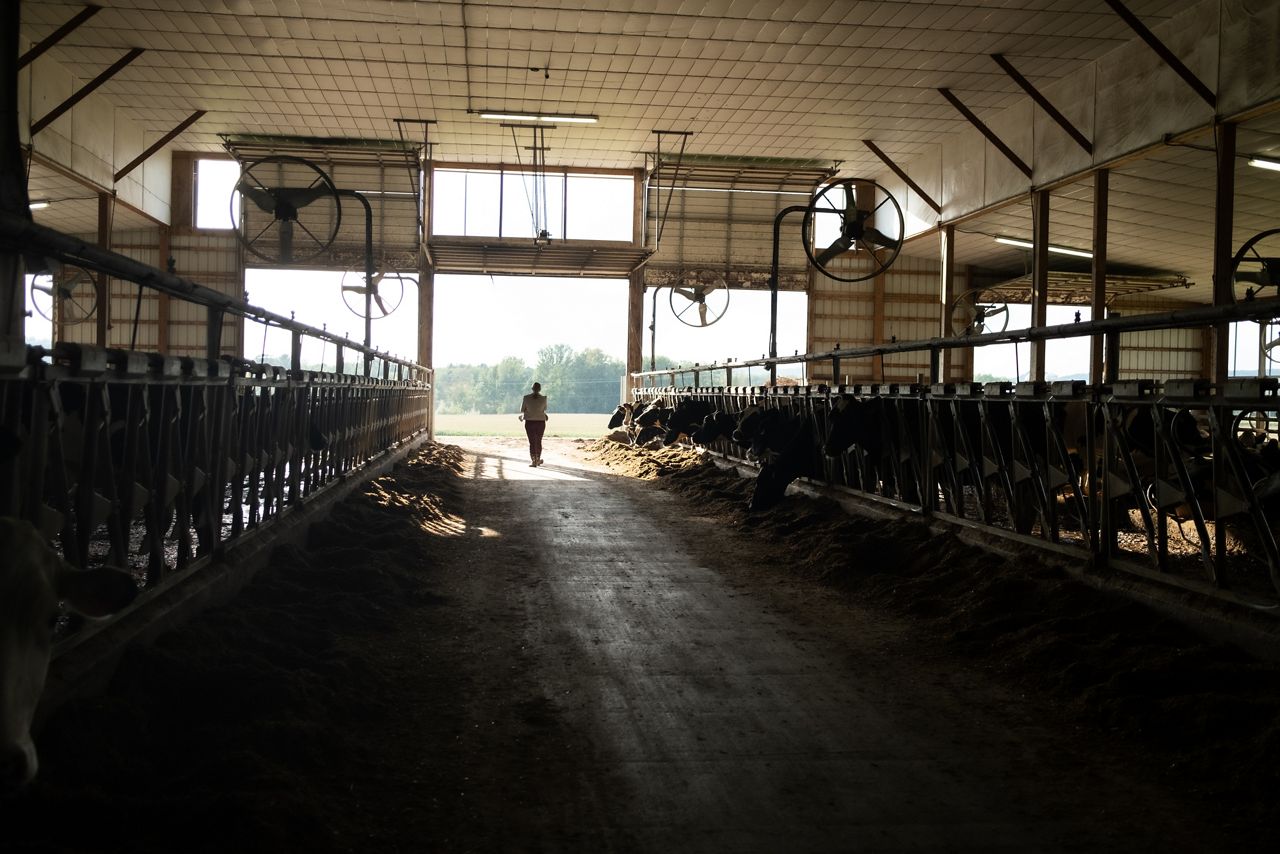
Johanna Bossard walking through one of Barbland Dairy’s barns. (Emily Kenney/Spectrum News 1)
In addition to the app, the cows wear pedometers to track when they are in heat. They use artificial insemination to breed cattle for their safety.
“Cows in heat, which are part of the estrus cycle, tend to take more steps,” Bossard says. “If technology and apps read that a cow is taking more steps than normal for the rest of the month, the cow is probably in heat. I know it can be bred.
These are just two examples of the technology being used at Barbrand and White Eagle dairies, with many more being used including drug line technology, nutrition and sustainability practices.

A cow picking up a lemon delivered from Walmart. The produce is finely chopped with an auger, but sometimes slips through. (Emily Kenney/Spectrum News 1)
One of our sustainability practices is incorporating expired produce and bakery items from our local Walmart into our cattle meals.
“Because cows are great recyclers, we are incorporating Walmart waste into our cattle feed. .
The dairy has also invested in dragline equipment. Instead of taking fertilizer that is to be applied to the ground and driving a truck to spread it, dragline technology uses dragline technology to inject the fertilizer into the ground, reducing compaction in the field and increasing fertilizer efficiency. is a more accurate way to apply
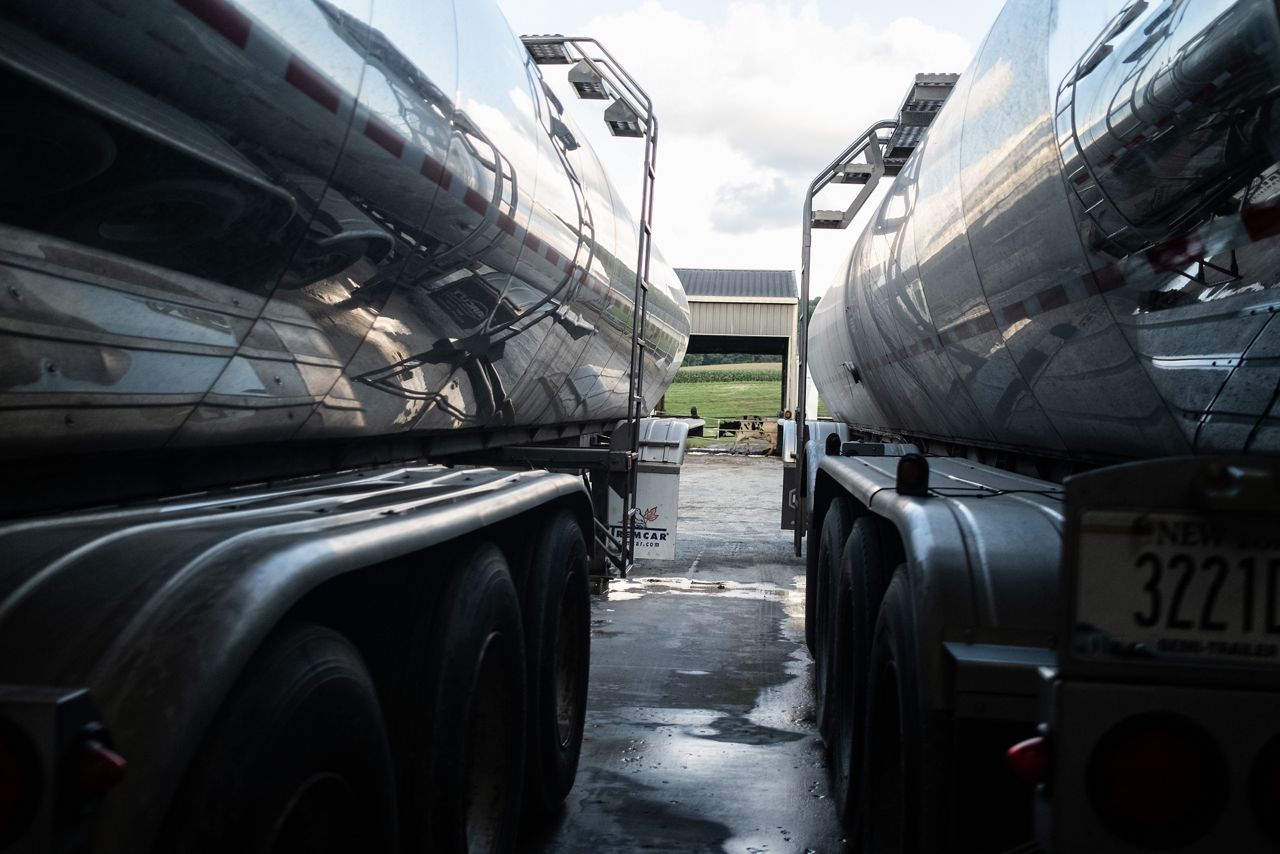
The trucks used to carry milk from the dairy to Chobani fill up when the cows are being milked. (Emily Kenney/Spectrum News 1)
Another farm you can visit at ON Farm Fest is the Albany’s Longhorn near Lafayette, which has about 180 longhorn cattle.
Rancher Jason Hartline says nothing is against cutting-edge technology, but you have to use what you have.
“I have to fix the fence at some point, and the best technology when you’re in a tight spot is to keep pliers in your back pocket,” Hartlein said.
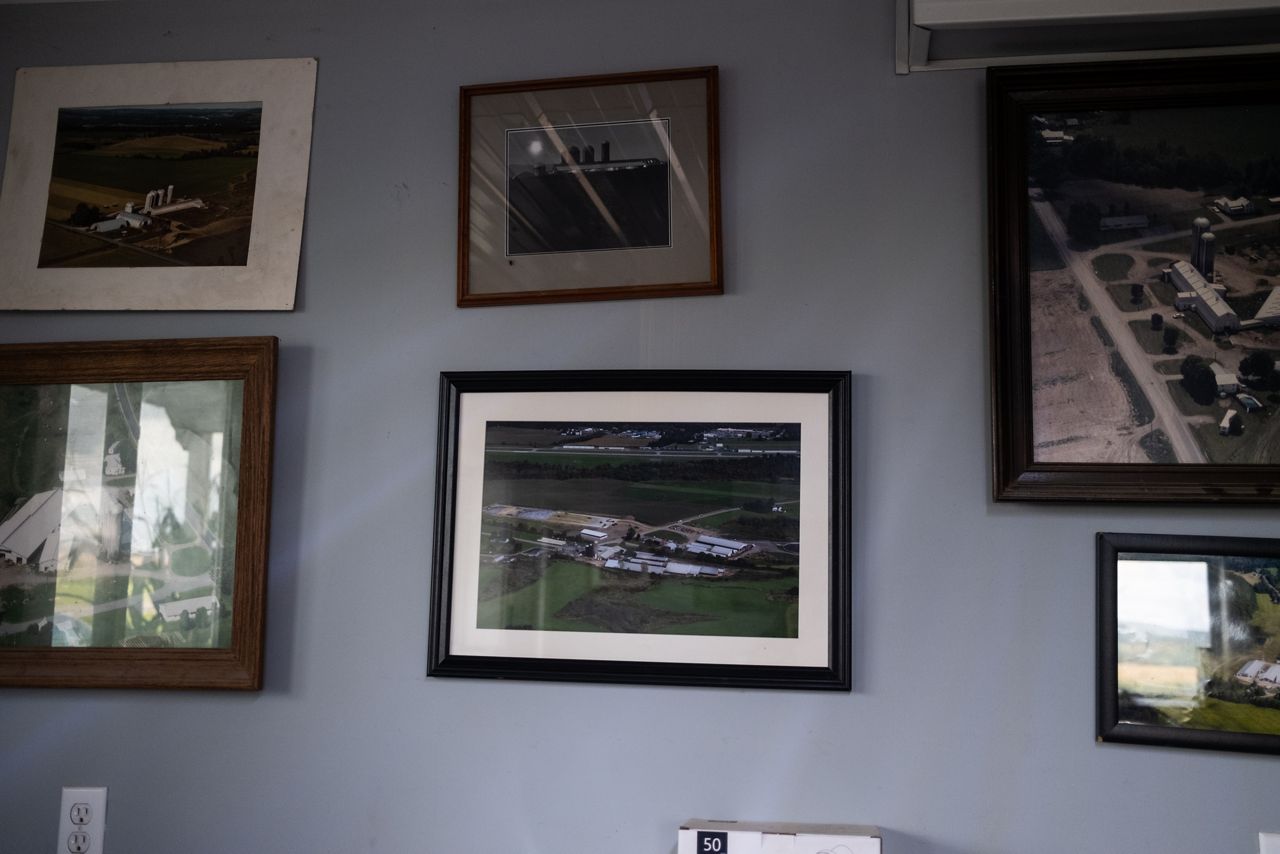
The office walls are decorated with aerial photographs of dairy farms. (Emily Kenney/Spectrum News 1)
Farm technology is an investment that costs millions of dollars. Hartline says you don’t have to have that kind of money to be a good farmer or rancher.
“You don’t need a big budget to be a good steward of your land or livestock,” Hartline said. “It’s more about understanding how you work with the land and livestock and the tools you need, rather than the tools you need.”
Hartline believes the idea that being a farmer or rancher requires a large budget is discouraging young people from joining the industry.
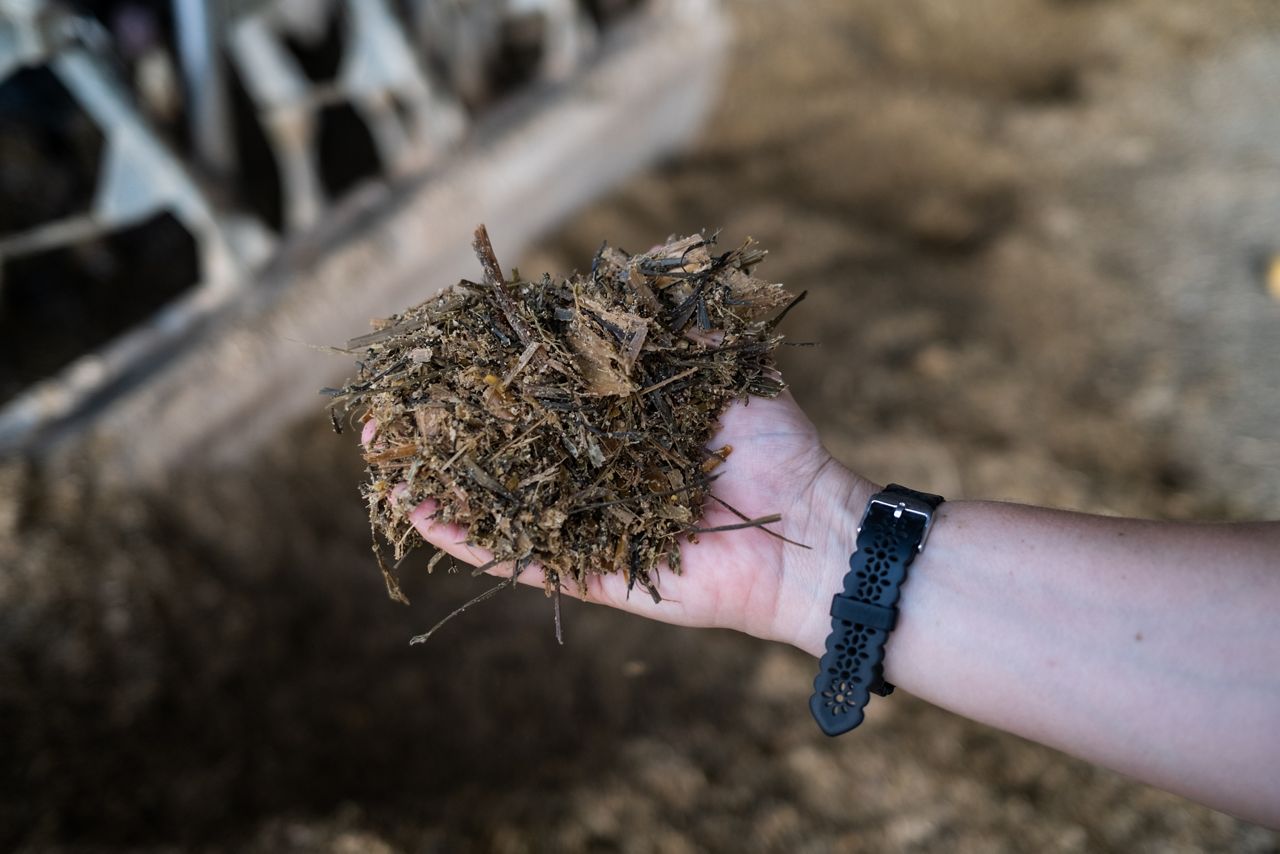
Johanna picks up a handful of what the cows are being fed, formulated by a nutritionist to contain everything the cows need. (Emily Kenny/Spectrum News 1)
“It’s upsetting because farming and ranching are dying professions. It’s hard to swallow because that’s what has fed Americans since the dawn of time,” Hartline said.
Like Barbland and White Eagle Dairy, Albanese Longhorns use tag numbers to identify each cow. But instead of using the app, I track the information in a spreadsheet.
Both Bossard and Hartline believe ON Farm Fest is a way for the public to see what they do, understand the importance of farming and ranching, and get in touch with livestock.
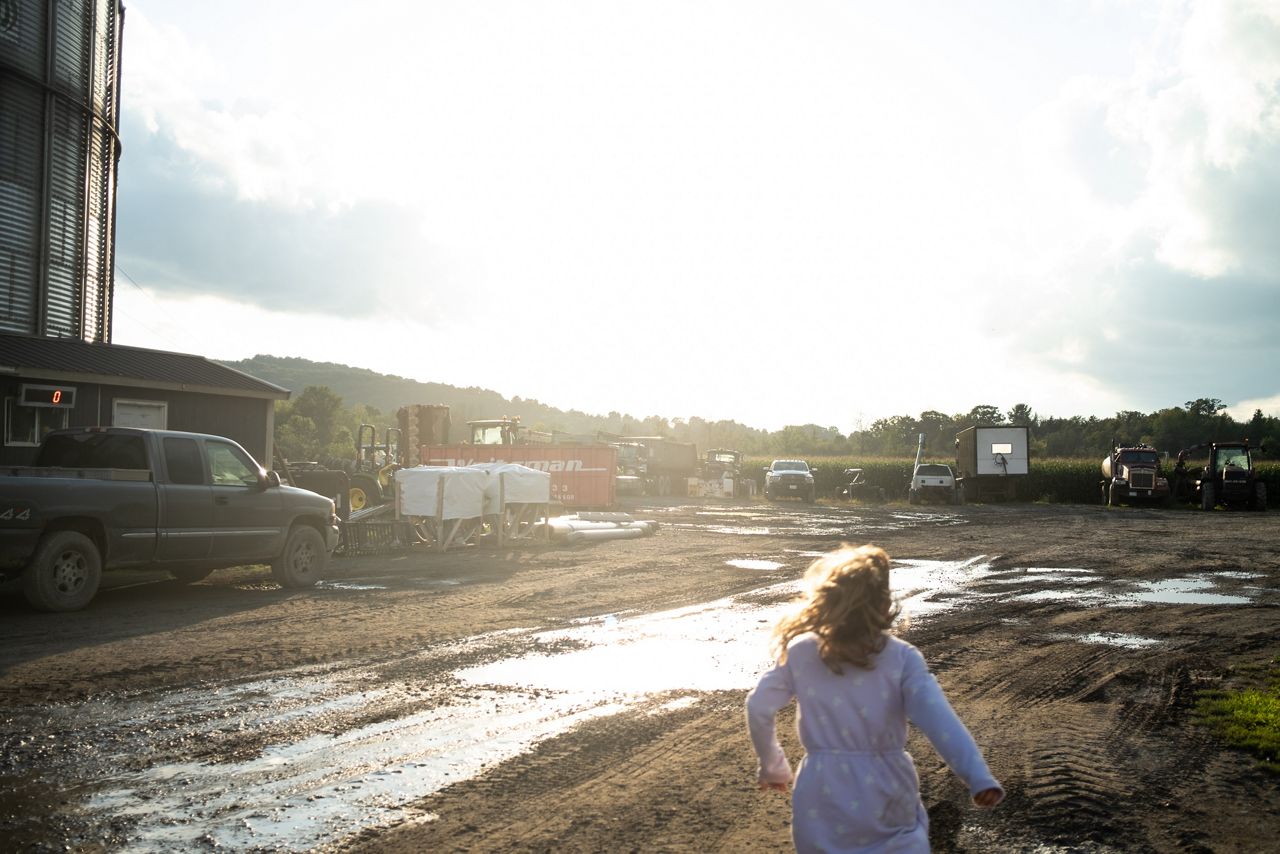
Johanna’s daughter runs through puddles on the dairy farm. (Emily Kenney/Spectrum News 1)
“I don’t think any of us would be here without agriculture, whether it’s the food we eat more than three times a day, the clothes we wear, the vehicles we drive,” Bossard said. And I think there’s a lot of misunderstanding there because the average American is six or seven generations away from farming.”
Hartline says exposing people to longhorn breeds is a look back at American history.
“It shows that it’s not just for production, it’s just for beef,” Hartline said. and to see them is to see a piece of American history right in front of you.

